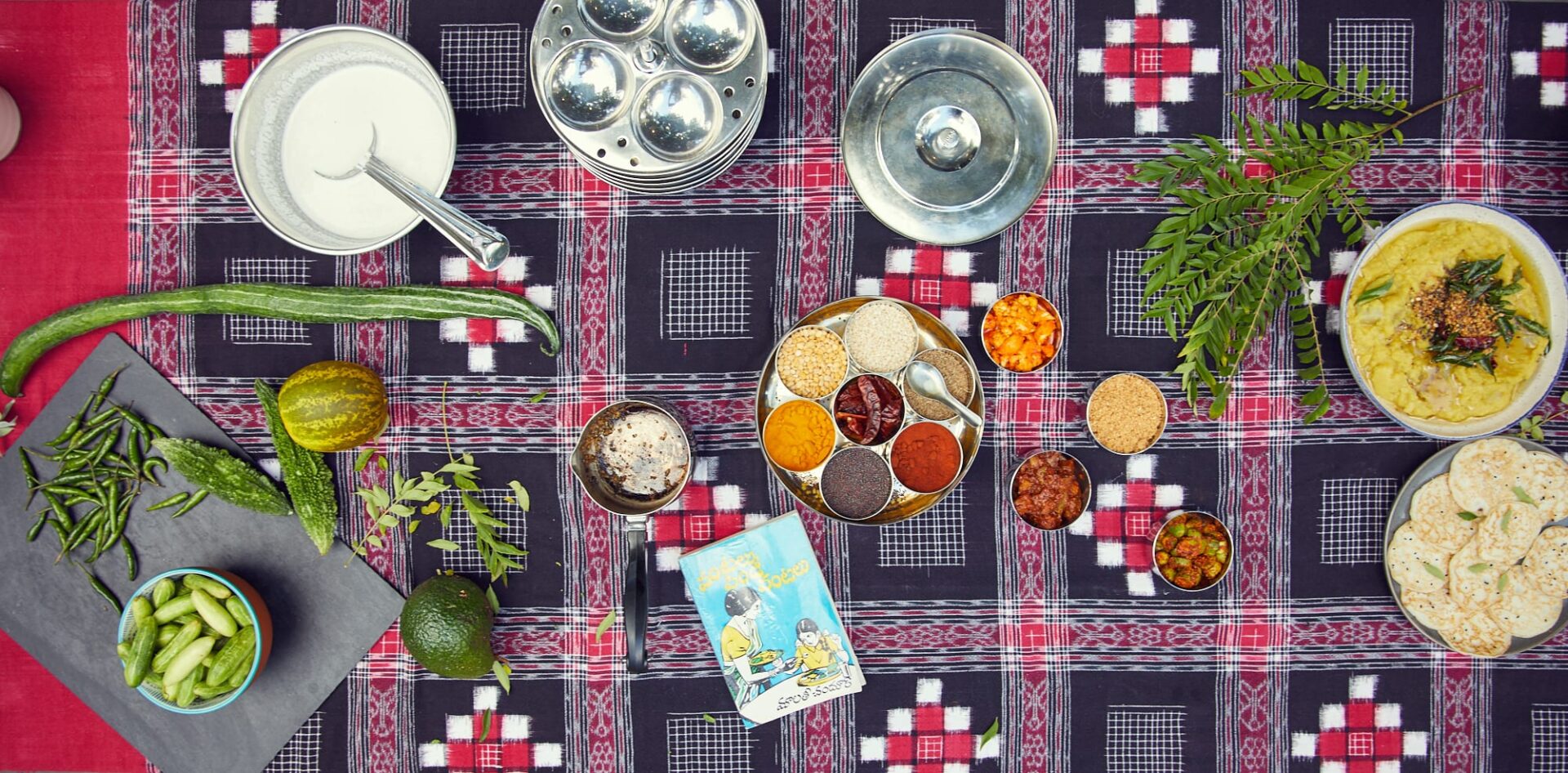A handful of dedicated chefs and growers are transforming South Florida into a hotbed of Indian regional cooking.
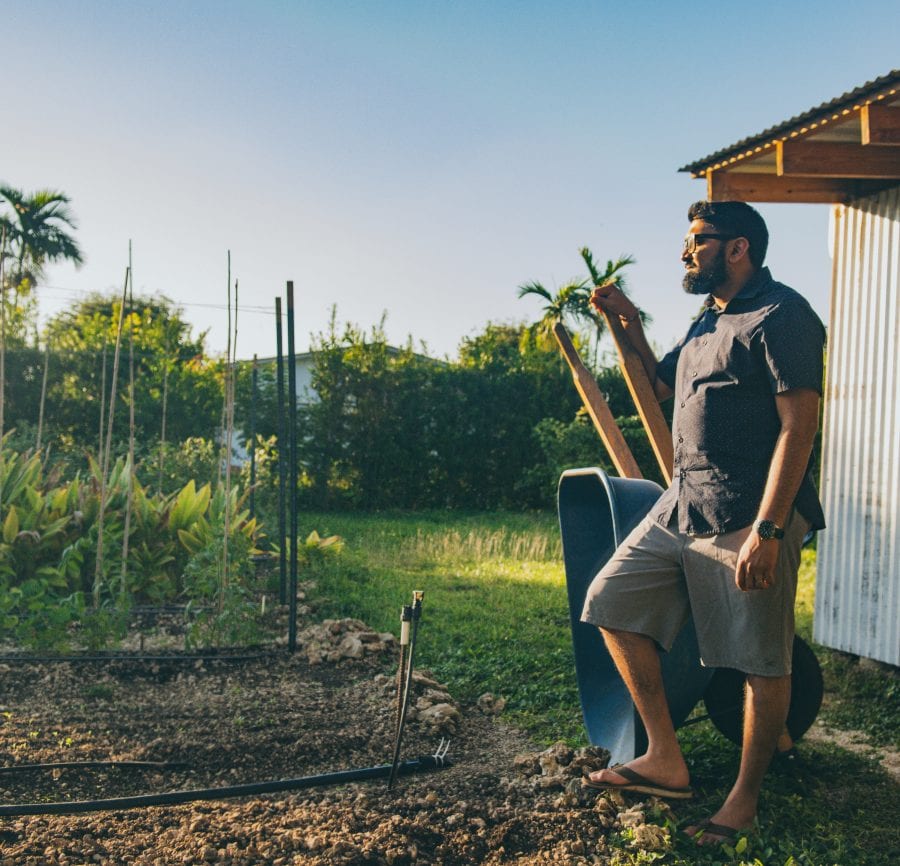
There are times during Miami’s rainy season when you think it will never stop. Steady summer downpours during which blue skies go black and the days blur together. Then, just as suddenly, the sky clears, and you’re surrounded by the otherworldly green of the tropics.
In this monsoon climate, distances collapse—you’re likely to find the exotic fruits and vegetables of Latin America and the Caribbean alongside newer south Asian transplants like dosakai melons, tinda squash, climbing yard-long beans, and longan fruit trees.
Until recently most of this produce left Florida, destined for markets and restaurants serving Chinese, Indian, Japanese, Korean, Pakistani, and Vietnamese immigrant communities across the country. But as the farm to table imperative has become the new normal, Florida chefs specializing in Asian cuisines are looking to their own backyard to source flavors from their ancestral homes. The result? Miami is seeing a boom in chef-driven, regional Indian cooking. “I think it’s a perfect location for people to experience Indian food,” says Miami restaurateur Shamsu Lalani, set to open Maska, with partner Pravin Mascarenhas and chef Hemant Murther—the first Indian chef to earn a Michelin star for his New York City restaurants Devi and Tulsi—this winter. “The population of people already loving Indian food has drastically increased and we’re going to do more and more to get people aware of Indian food and culture.” TLP talks with some of the players.
Regional Roots
For Niven Patel, chef and owner of Miami’s Ghee, a personal journey back to Indian food started with a tomato. While working as chef de cuisine at the popular Michael’s Genuine Food and Drink, he spotted a young cook thoughtlessly tossing out half an heirloom tomato. “I asked if he had any understanding of how hard that was to grow,” he recalls. Niven invited him, and any other interested restaurant staffers, back to his home in Homestead, where he lives with his wife, Shivani, and her parents. Behind their house, on a couple of acres bordered by mango, papaya, and avocado trees, the crew had built raised beds and planted not just tomatoes, but peppers, carrots, beans, kale, and herbs. Indian produce took up very little real estate that first year, Niven says. “It was all things they could use at Michael’s except for a few Indian things my mother-in-law wanted to grow.”
That all changed when he developed the idea for Ghee, a restaurant based on his family’s cuisine from Gujarat, India’s westernmost state. (Born in Valdosta, Georgia, and raised in Jacksonville, Niven grew up eating Indian food every day. But he had never cooked it professionally.) It wasn’t long before he started growing taro and okra, turmeric and curry leaves, purple yams, chili peppers, and black-eyed peas.
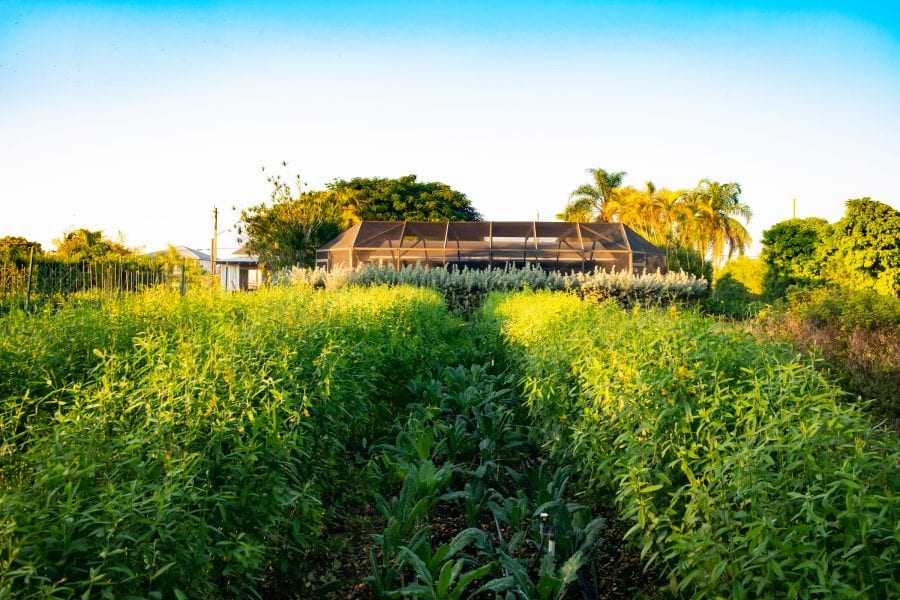
A Growing Community
What Niven can’t grow himself, he sources from his neighbor and friend Mahendra “Mike” Raolji, owner of Jalaram Produce. Originally from Gujarat, Mike planned on studying medicine until the temporary work he found on his family’s Pennsylvania farm became permanent. In 2000, he struck out on his own, making his way south where he started growing Indian eggplants on ten acres in Homestead. Eventually, he added a few more acres to grow bitter melon, then Indian cucumber. Today, he farms some 560 acres throughout the region. His extensive product list includes well over a hundred fruits, vegetables, and herbs that he ships to restaurants across the country. “In India, there are south Indian people, north Indian, Gujarati people, and they don’t eat the same vegetables,” Mike explains. “What I eat in my state, they don’t eat in other states. I grow vegetables from all the states here.”
And demand locally is ramping up. Jalaram tops the list of local producers Mascarenhas and Lalani call on to recreate authentic tandoor cooking in Midtown Miami. Pravin hopes to work with Mike to cultivate produce especially for him. “We have big plans to bring regional foods from India and dishes that people of Florida, [not to mention] Miami, haven’t seen before.”
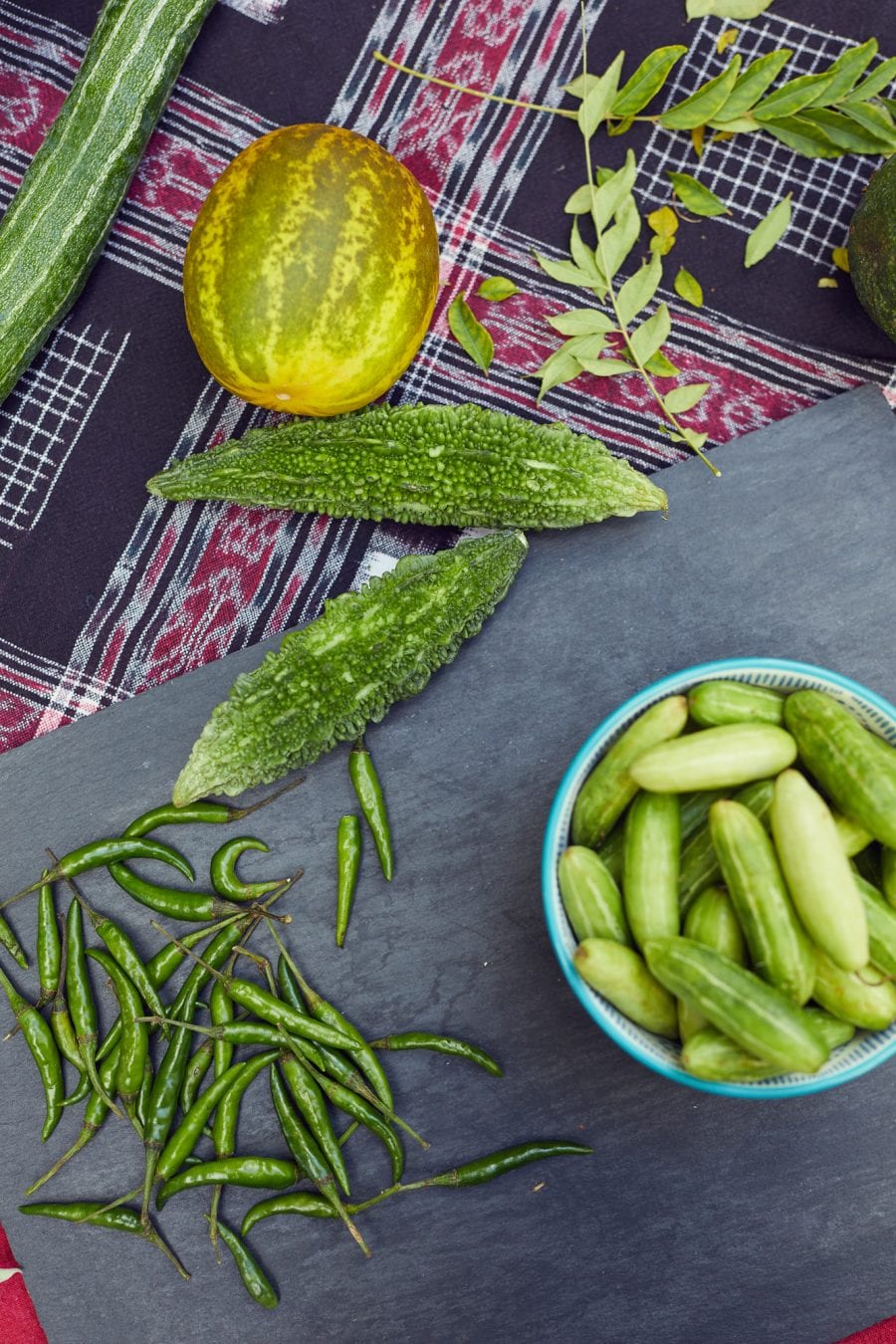
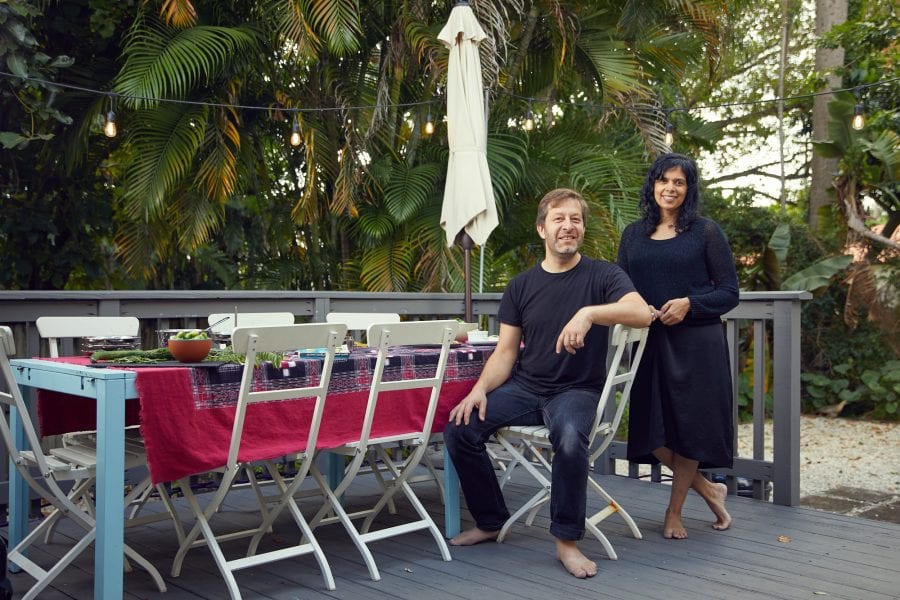

Tiffin Delivery
In 2013 Anita Sharma and her husband, Matthew Webb, launched Amman, a delivery service that brings Indian home cooking directly to customers. Inspired by India’s famous tiffin service, Amman offers a weekly subscription. The cylindrical metal containers hold a roti (flatbread), a vegetable, a daal (lentil dish), and sometimes a pickled fruit or vegetables. Anita finds her inspiration in the South Asian flavors of her native Andhra Pradesh: ingredients like coconut, tamarind, curry leaves; dishes such as lentils and pullao rice spiced with ginger, garlic, onions, cloves, cardamon; and a repertoire of condiments that includes nuvullu podi (sesame powder) and aavakaya (a pickle made with red chili powder, ground mustard seeds, gingelly oil, and fenugreek).
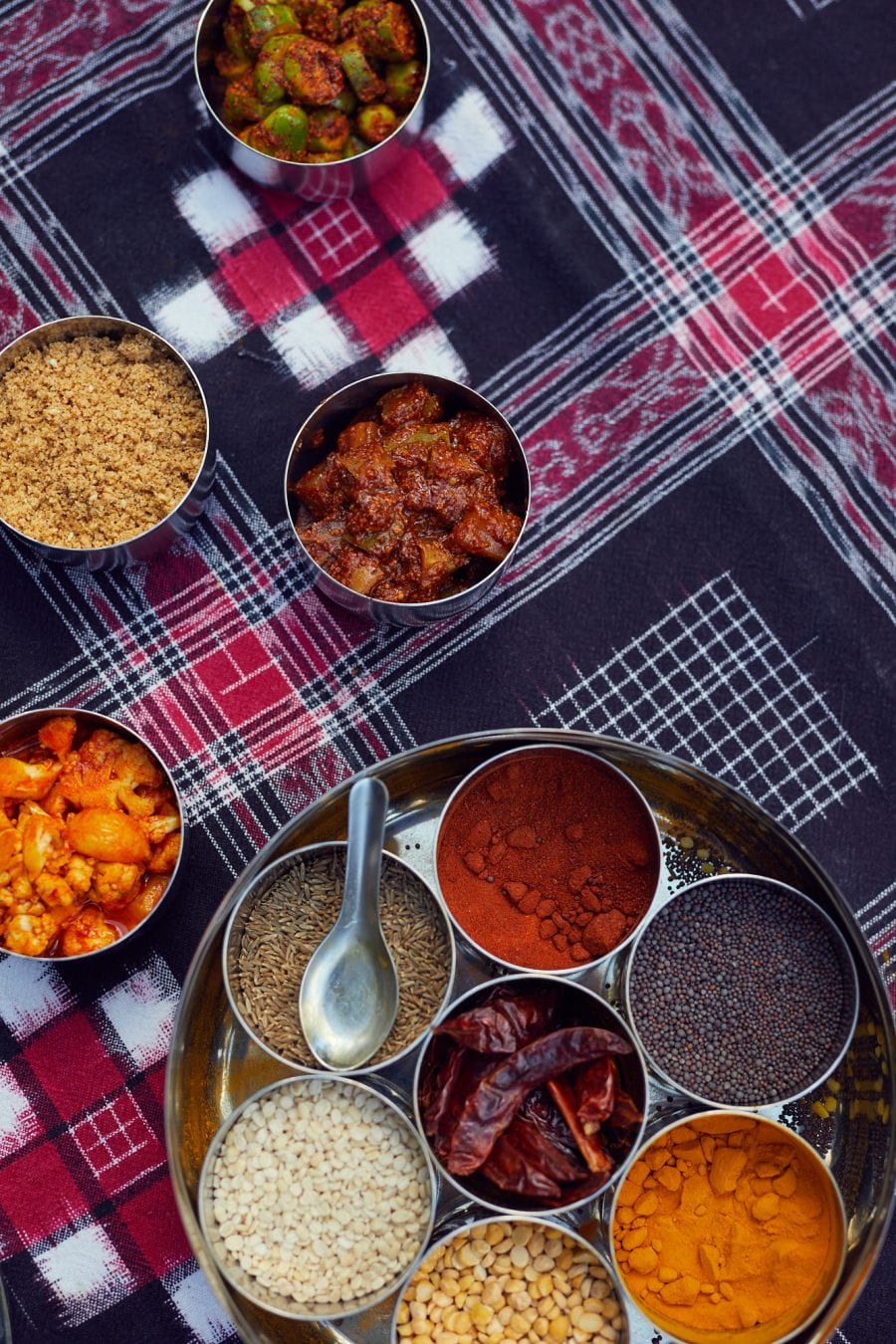
These were the flavors her family sought to recreate when they first arrived in South Florida from Andhra in the early 1980s. “We were in this unknown, foreign land and we just kind of banded together,” she says. “Every weekend we would cook these elaborate meals.” Her family also adapted their recipes to what was available. She fondly remembers her aunt’s cranberry dal based on a traditional steamed lentil pappu, and corn on the cob curry is still a family favorite.
After a stint in New York City, Anita and Matthew relocated to South Florida with their two young daughters during the Great Recession. Cooking became a way of reconnecting with her family and culture. Anita spent long hours looking through her mother’s old recipes, many written by her grandmother and aunts in Andhra’s Telugu dialect. Her largely vegetarian and sometimes vegan cooking became popular with their diverse group of friends, who had little knowledge of regional Indian food. “This is the kind of food we eat in our homes—very specific recipes from certain districts in south India,” Anita says. She and Matthew launched Amman with a few lentil dishes and curries.

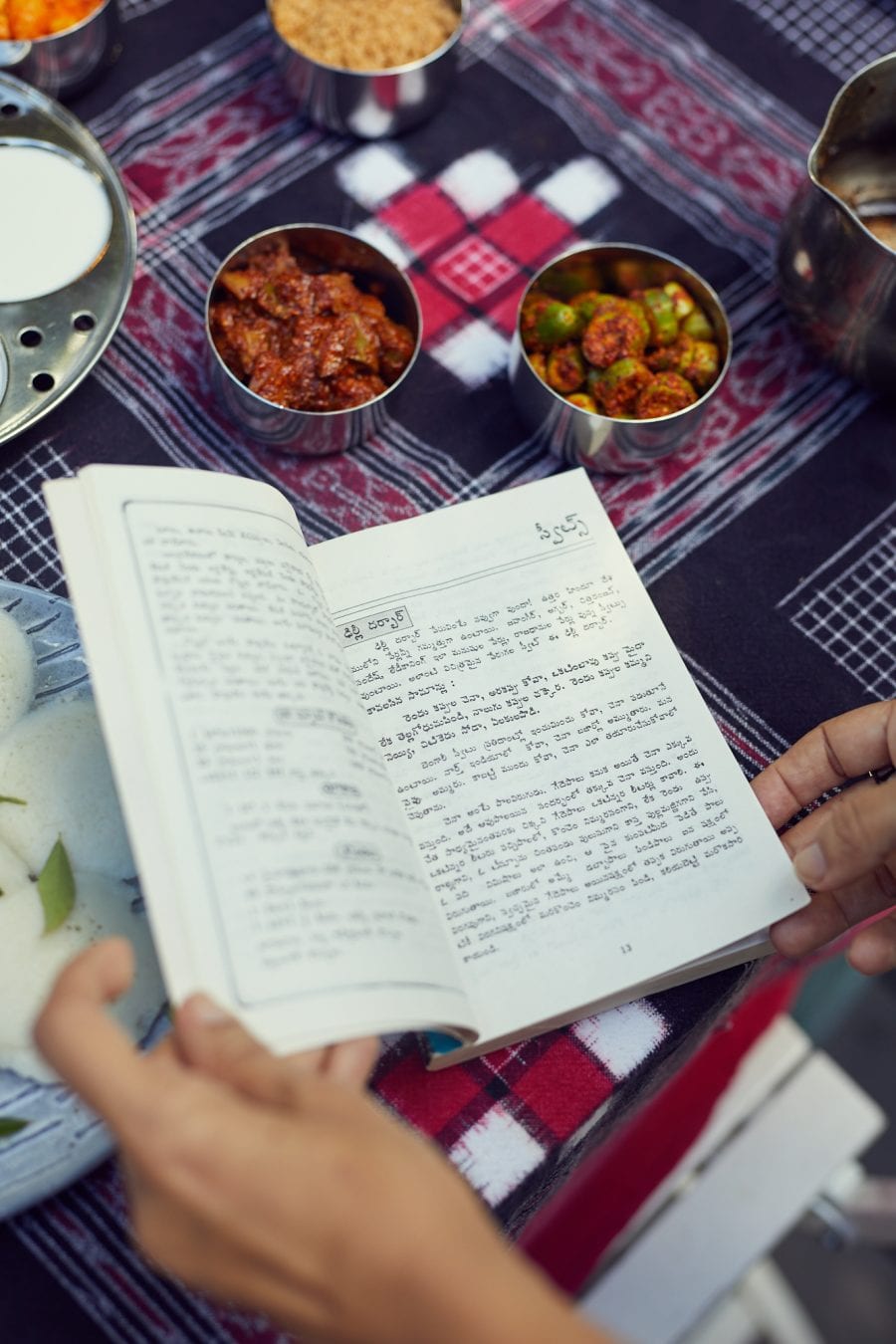
“We both felt there was a need to educate people and introduce them to this whole new palate of flavors,” Matthew explains. “Anyone can appreciate culture through food. You enjoy it and then you’re interested about learning more.” Partnering with cultural organizations, they’ve brought Andhran cuisine to a wider audience through pop-up dinners. Past events have included an Indian Shabbat in the Wynwood art district and a six-course, rice-themed meal tied to the popular O’Miami poetry festival. Says Anita, “I want to spread the love by introducing people to this kind of cooking.”
Home Cooking
Niven also took the pop-up route while developing his first Indian concept. In the run-up to opening Ghee, he invited friends in the restaurant industry to join his family and the tribe of cooks he’d assembled for backyard dinners. Ghee opened in May 2017 in residential South Miami. At the restaurant, enormous jars of spices balance out sharp modern lines and the sleek open kitchen. It’s managed to retain the same family feeling first created at Niven’s garden. Shivani greets customers at the door and Niven’s father-in-law can always be spotted darting from the back of the house to the front, making sure all is okay. His mother-in-law, too, is a steady presence. Many of the original cooks and servers are still with them, an anomaly in the ever-shifting restaurant world.
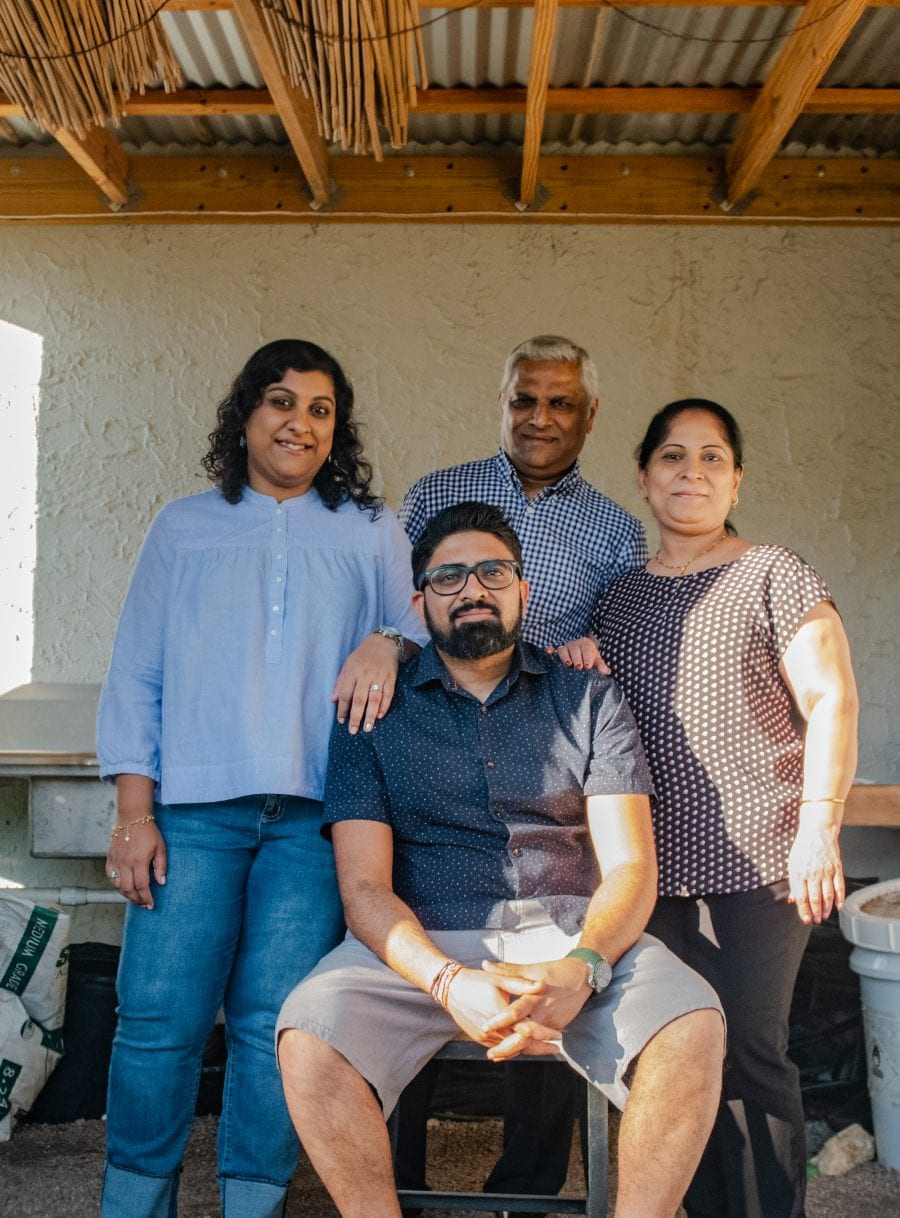
On the menu, backyard pakoras, taro leaf, calabaza, and tamarind fritters served with a date chutney touch back to those early dinners at Niven’s home. Impossibly tender pork belly vindaloo gets a shot of heat in the form of habanero peppers, and Key West pink shrimp comes with Florida corn succotash. South Florida diners connect easily to the pan-tropical dialect. “In the beginning, people walked in thinking it was another curry house,” says Niven. “But the beauty was that a lot of them had an open mind.” Niven has hardly slowed down, earning a James Beard semifinalist nomination for Best Chef: South and opening a second location in the Design District headed by his friend Pushkar Marathe.
But it’s still the vegetables grown in Niven’s garden that shine brightest. Local farmer Brendan Sutton is on staff to help expand production and increase supply to both restaurants. Patel points proudly to a simple eggplant dish with Yukon Gold potatoes and black-eyed peas cooked in a bagar of ghee infused with mustard seeds, cumin, and red chiles. “It’s not lot of powdered curries and spices,” he says. “Even when someone from India eats it, that brings them to their mom’s cooking. And that’s what we want.”
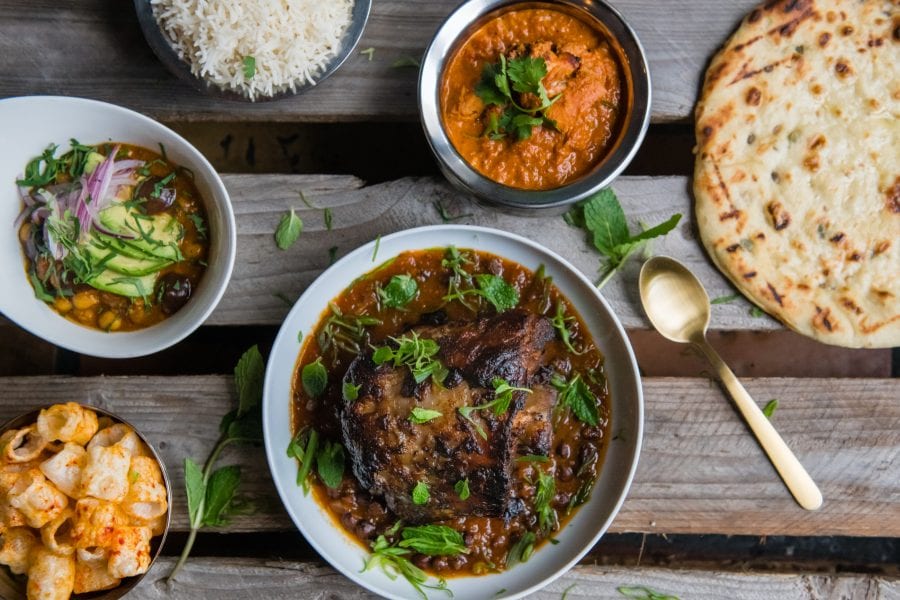
share
trending content
-
FINAL Vote for Your Favorite 2025 Southern Culinary Town
-
Get To Know Roanoke, Virginia
-
Shrimp and Grits: A History
by Erin Byers Murray -
New Myrtle Beach Restaurants Making Waves
-
FINAL VOTING for Your Favorite Southern Culinary Town
More From Roots
-
How Nicola Blaque Is Redefining Jerk Chicken in the South
-
Infusion of Spirit with Alba Huerta | Listen
-
Meet a Local: Tank Jackson | Listen
-
Of Rice and Flavor with Nicole Cabrera Mills | Listen
-
ChòpnBlọk: A Journey to Connection








